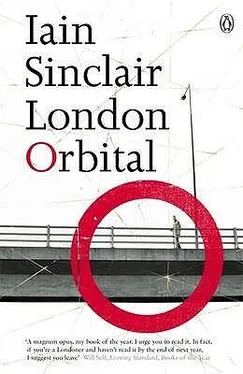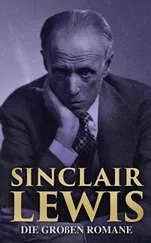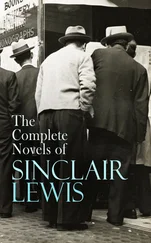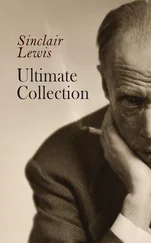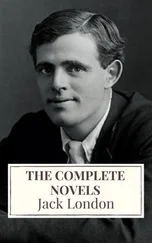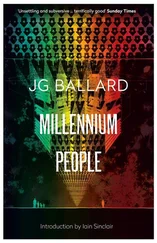Bluewater is the contrary of the sanatorium in Thomas Mann’s The Magic Mountain. Instead of a high place in which interestingly tubercular eccentrics rehash the great European themes, here is a hole in the ground in which ordinary, unsuspecting citizens crack up, develop the downmarket equivalent of yuppie flu. They wander the levels, under the soft cosh of muzak, feeling the lifeforce drain. These are the Retail Undead. De-blooded victims of the Purfleet kiss. Travellers in limbo. Suspended between life and death (an extension of the Queen Elizabeth II Bridge).
Chris Petit, a longtime stockpiler of business park and off-highway imagery, is persuaded from his bunker by the promise of a run to Bluewater. (He will then accompany Renchi and I on our pedestrian journey to the north bank of the Thames — however that is to be managed.) We get a ride down my favourite road, the A13, a spin over the bridge in the Merc with blue-tinted windows. The world looks better that way, clouds acquire definition. Supporting cables, mad eyelashes, blink against the climbing sun.
Bluewater has parking space for 13,000 cars. Coming into London on a weekend afternoon, between Junctions 4 and 2 of the M25, you know that this isn’t enough. The motorway is clogged, costive. Bluewater has no public parking space. Spend or move on. Pedestrians will never make the descent. They are treated like Morlocks. Any unwelcome incursion will show up on a state-of-the-art security system that cost £ 1.6 million. There are 35 °CCTV cameras watching you wherever you go. Silent, deadly, they drain your essence. Miles of fibre-optic cable. Walls of 28” and 38” monitors. Follow the winding road down into the quarry and you’re in the movie. The release print is CinemaScope, but that’s an illusion, a drive-in fantasy; the true spectacle is the rolling wall of monitor screens, drugged shoppers leaving ectoplasmic contrails. The Bluewater complex is linked to the Dartford Interchange, the bridge, the tunnel; 200 cameras pour images on to digital tape that allows thirty-one days of continuous recording. Lift an Olympus Superzoom 120, a Sony DV, and the uniforms will pounce. No souvenirs from this car park. The movie belongs to Bluewater™. Leisure-terror, that’s what frightens them. You might walk away with a Polaroid shot of the fountain, a revolving door, the markings in the car park. (Empty bay reserved for sponsors, politicians, quango vermin.)
Bluewater is what is known as a ‘car park-led’ project; most of the quarry floor is parking space, the strange retro-futurist construction (by a firm of architects called Benoy) is tacked on, a desert camp. Taliban chic: a very expensive ( £ 370 million) hideaway in a deep chalk bunker. Temporary permanence. The shopping centre shares this characteristic with Lord Rogers’s Millennium Dome. To gel with restless M25 consciousness, Bluewater has been designed to feel like a one-night stopover, an oasis for migrants. The huge tents that once sheltered London’s smallpox cases on Temple Hill are the inspiration for this collision of ribbed domes and curved windows. The American architectural consultant Eric Kuhne, invited to talk up the site, spoke of ‘a new kind of city’. A ‘resort’. Rest and recreation for vacationers.
A form of petrol-guzzling tourism has evolved: Bluewater is a Ballardian resort ( Vermilion Sands ), shopping is secondary, punters come here to be part of the spectacle. The North Kent quarry is an unanchored destination: nobody is quite sure where it is. It’s never in the same place twice. The surrounding road systems are so complex — FOLLOW THE SIGN FOR CANTERBURY— trippers can’t work out which side of the Thames they’re on. They arrive exhausted. They depart half-dead. They’ve taken part in the experience of travel. They’ve seen the car park. Too weary to walk, they stumble into the ‘leisure village’ with its artificial day-for-night lighting. The place is a gigantic upgrade of Margate’s Dreamland arcade: glittery cargo behind glass, get-lucky trash you don’t want (but try to win), fast food. Bluewater combines slot-machine avenues with fun fair rides: escalators, lifts, cinemas, indoor jungles, pools, boating lakes, climbing walls and even, yes, cycle hire and a ‘discovery trail’. Your ‘hosts’ (welcome, campers) are trained in sign language. There are Braille maps and personal guides for the visually impaired.
From above, Bluewater looks fine: sunlight glancing off pastiched oast houses. Petit doesn’t risk a smile, he uncreases his Jesuitical frown. There is purpose to his expedition, he wants to buy a pair of Y-fronts; but this is no simple commercial transaction, he has roamed half the country, from Cribbs Causeway (outside Bristol) to Asda (Eastbourne), to Lakeside (Thurrock). No joy. The man is a perfectionist. One day, so he believes, he will discover the M&S grail: right weight, style, fit. The Look. The correct gear for the proverbial road accident: no shameful moment on the trolley, if he finds himself taken into Darent Valley Hospital.
At first, Bluewater provokes such impulses. It’s like arriving at a Channel port; the transit point becomes a destination. Dover, Folkestone. The same grid of cars. The same concern about getting into the right stream. High white cliffs. Visible evidence of wartime activity; tunnels, huts, gun emplacements. Security (discreet but firm). The dizzy sense of impermanence, not being where you are; exhausted from travel and anticipating more of the same. Customs paranoia. Worries about having left your passport, tickets, green forms, in the kitchen drawer.
We set off in search of duty frees, an investigation of this inland port. It’s not England and it’s not France; it’s more like the US without the genetically modified mall addicts, the mutated burger herds. But Bluewater excursionists are not regarded as urban terrorists if they don’t buy buy buy. Thank God. Because nobody has the stamina to shop, to make a decision.
You meet trembling humans who have lost their cars: green zone or blue? The Heathrow experience, jet-lagged, combing the ranks, struggling with heavy bags: which terminal was it, which floor? Tilbury, the old port for London, with its many platforms and shuttle of trains, has died; an echoing ghost. Bluewater (no access by river) has sixty buses per hour, 130 trains per day, five taxi ranks and colour-coded car parks without number.
The design is stolen from the Victorian asylums, from Joyce Green Hospital: a broad V, within a box (or Rubik’s Cube). The three barbicans that command the points of the V are House of Fraser, John Lewis, Marks & Spencer. There is an upper and a lower mall. The temperature is unnatural; so temperate that it drives you mad. You can’t sweat. You’re blow-dried. You can’t breathe. Air is recycled as in an airliner. You’re supposed to make those air-terminal, duty-free, impulse purchases that you come to regret: shirts that never leave the bag, rubber-sealed bottles of cherries in brandy, lighters for those who don’t smoke. Airport consumption is reflex superstition: buy and live.
The toilets are too clean for England and they’re open; our cities have long since dispensed with such philanthropic frivolities, converting every pissy trench into a wine-bar or body-tanning facility. Bluewater is the only safe way to visit America, it’s the post-11 September destination of choice. Heathrow without the hassle. Then take your pick of: Santa Fe (‘South Western American restaurant and Cocktail Bar… authentic and exciting’), Ed’s (‘Authentic 50s American diner’), Tootsies (‘Authentic American family restaurant in a stylish setting’). Plus: McDonald’s, Kentucky Fried Chicken and the multiplex with blockbuster buckets of popcorn and hogsheads of energy-boosting drinks. These days, only the fake is truly authentic.
Читать дальше
